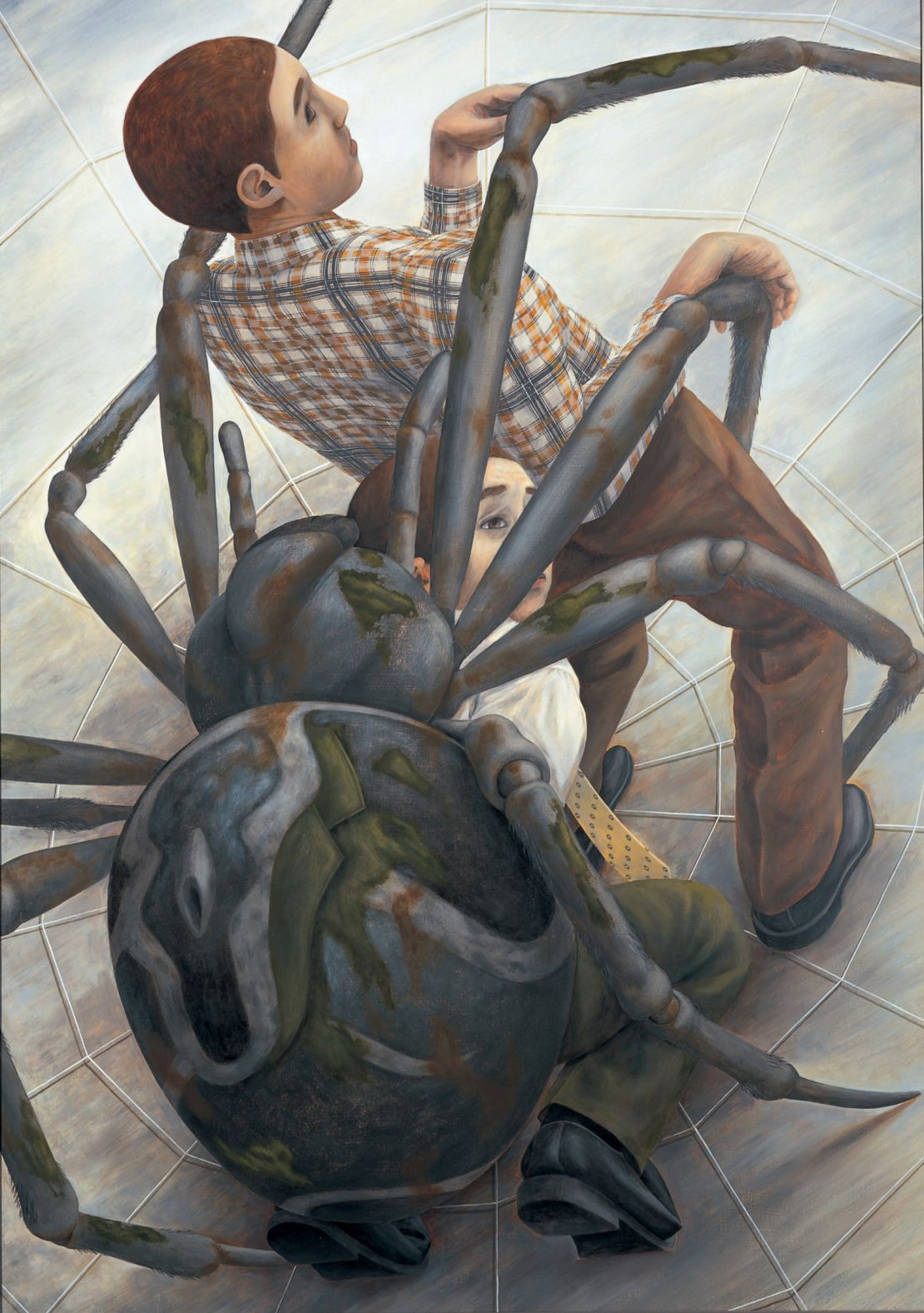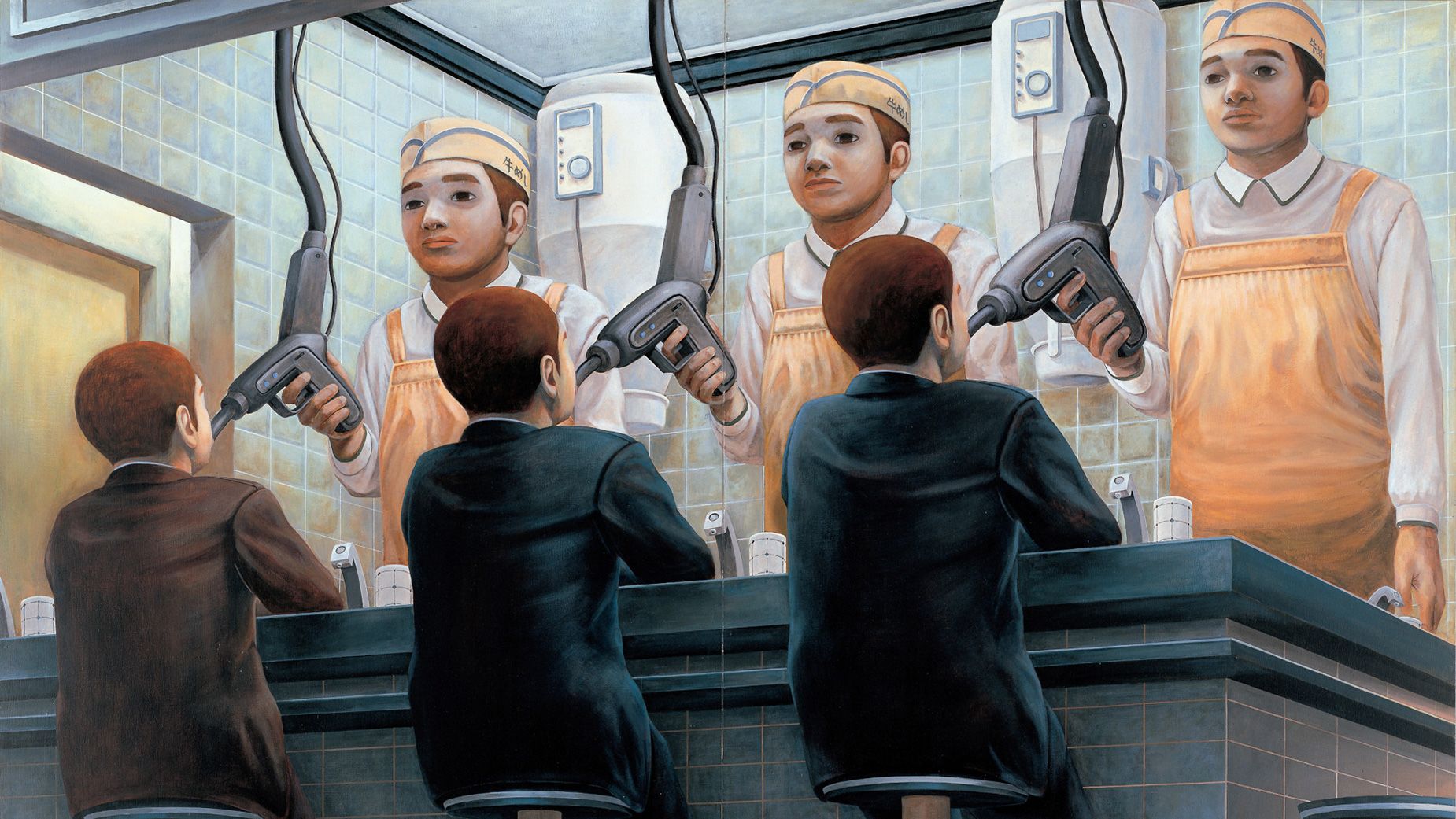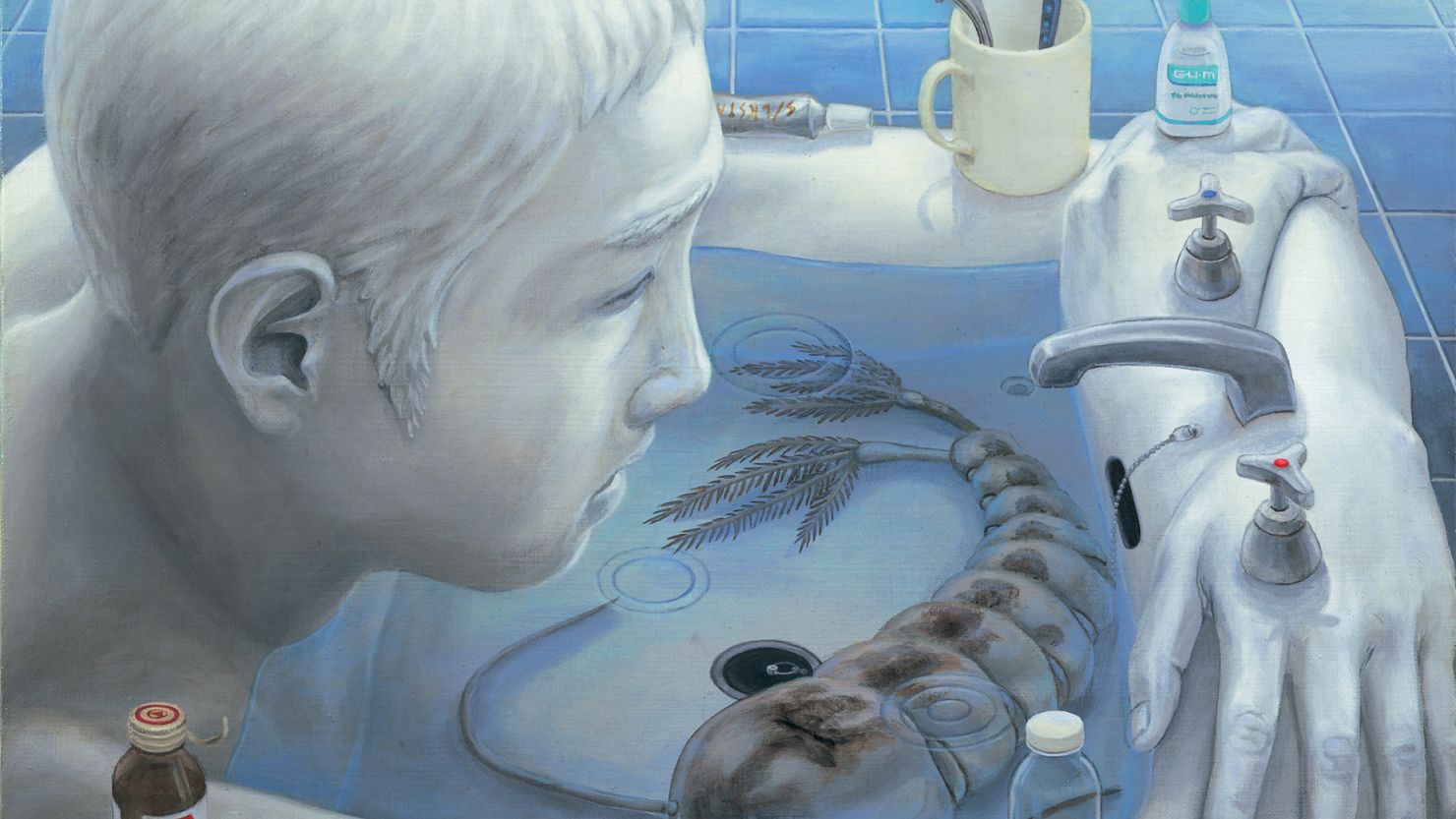In the land of Hello Kitty, kawaii (“cute”) culture and the Neo-Pop art of 1990s Japan, Tetsuya Ishida was an outlier.
The surrealist artist, who died in 2005 aged 31, wasn’t a loner, according to those who knew him, but he stood apart from his contemporaries and the era’s better-known art movements, capturing in his work the deep, dark undercurrent of anxiety and fear permeating the country’s youth.
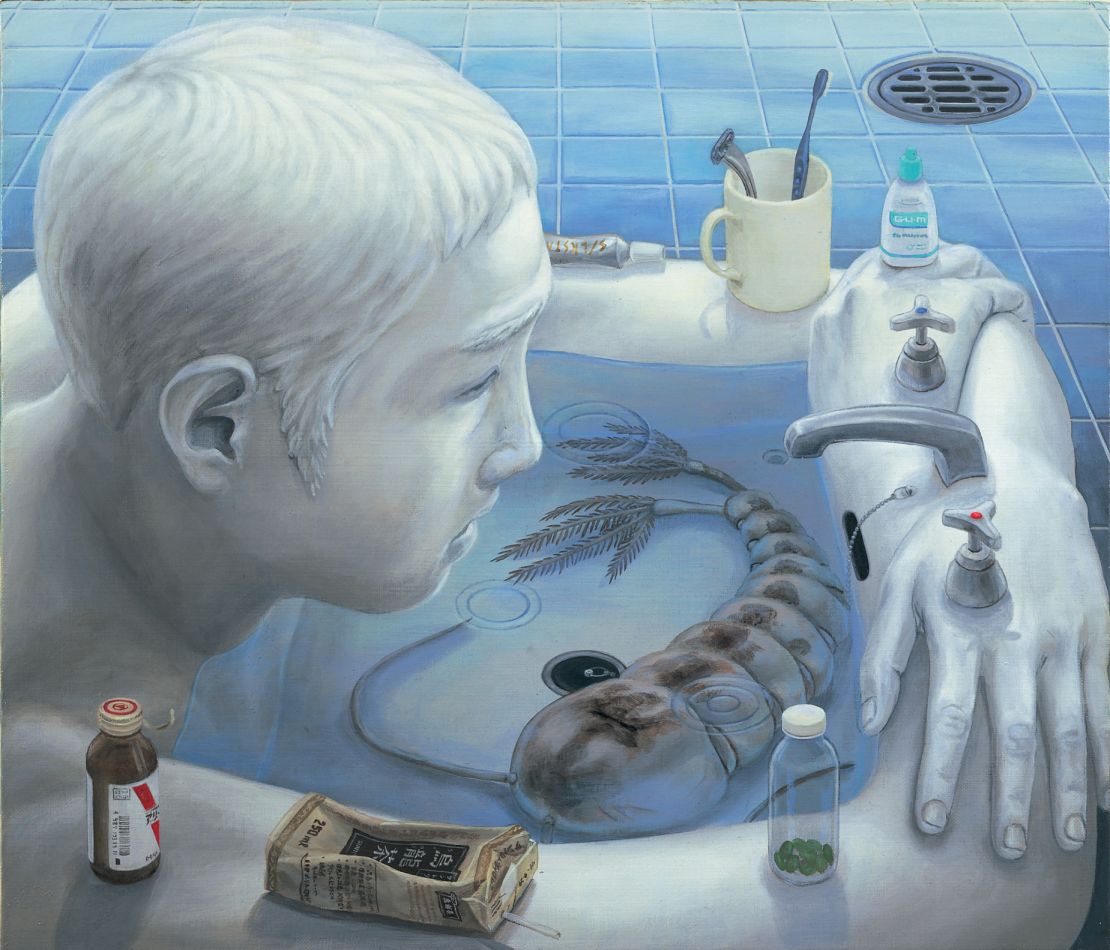
His eerie paintings of salarymen and schoolchildren exude loneliness, absurdity and despair, offering a glimpse into what it was like to be part of Japan’s “lost generation” — the young people who found themselves hamstrung by the country’s economic and social woes in the 1990s and early 2000s.
In Ishida’s 1996 work “Refuel Meal,” a row of expressionless, robotic workers in aprons and hats feed anonymous suited men through devices resembling drills or gas pumps. In “Gripe,” produced the following year, he painted a hunched figure in a tattered suit, his body trapped as it appears to transform into an industrial forklift.
The children he depicted were, often, similarly confined. In the 1999 piece “Prisoner,” a giant figure lies pinned down — a child-like version of Gulliver; instead of ropes, his body is held in place by the structure of a school building. Near-identical kids in gym clothes stand around him in the adjacent playground, though none seem to interact with him or each other — a not-so-subtle critique of the Japanese education system.
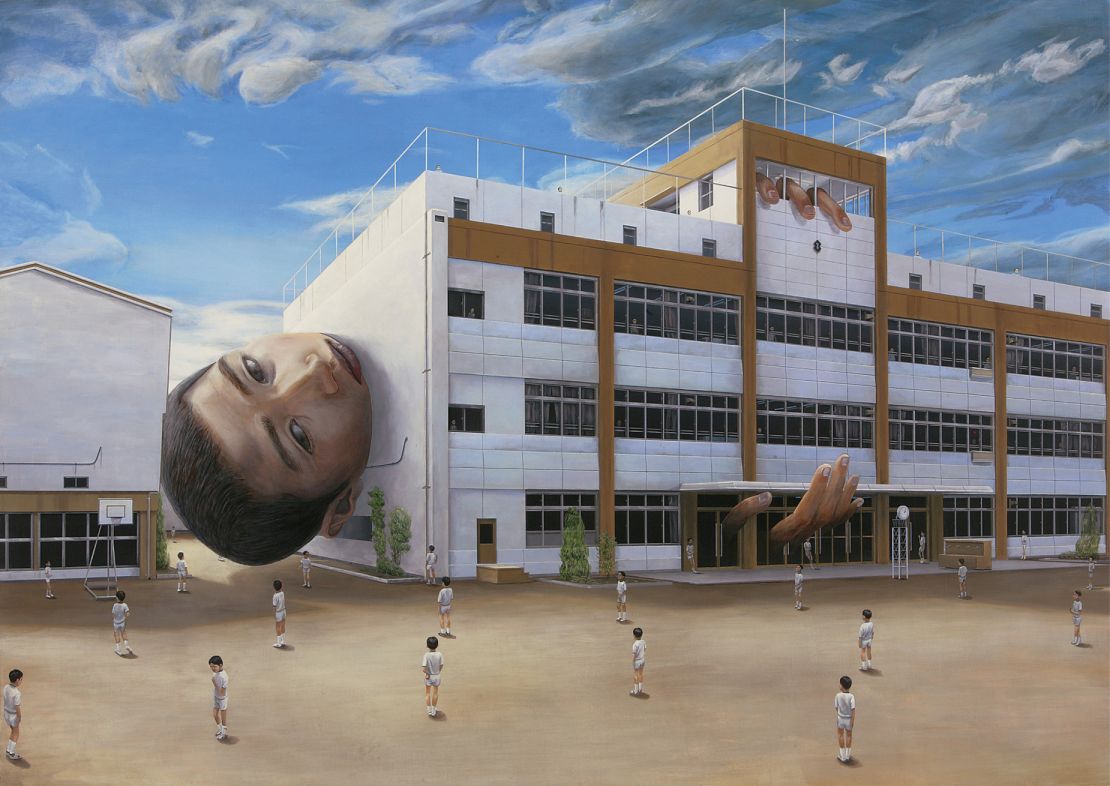
“I think what is so powerful about his work is that we find ourselves in these paintings,” Nick Simunovic, managing director for Asia at Gagosian gallery, which represents Ishida’s work on behalf of his estate, told CNN in a video interview. “His work was incredibly prescient in terms of assessing the human condition as we hurtle headlong into a future that we can scarcely understand.”
Gagosian recently held a retrospective of Ishida’s art, titled “My Anxious Self,” at its New York gallery. While the paintings capture a particular moment of time in Japan, Simunovic believes the themes Ishida dealt with are even more urgent and relevant now. Estrangement, alienation, seclusion, social anxiety and the omnipresence of technology are all challenges people are grappling with today.
Ishida’s “metabolizing and digestion of the world in which he found himself… the pressures that humans were under because of technology, because of economic crisis — he felt these very acutely,” Simunovic said. “And he was able to project the broader social fears in Japan at that moment (in his work).”
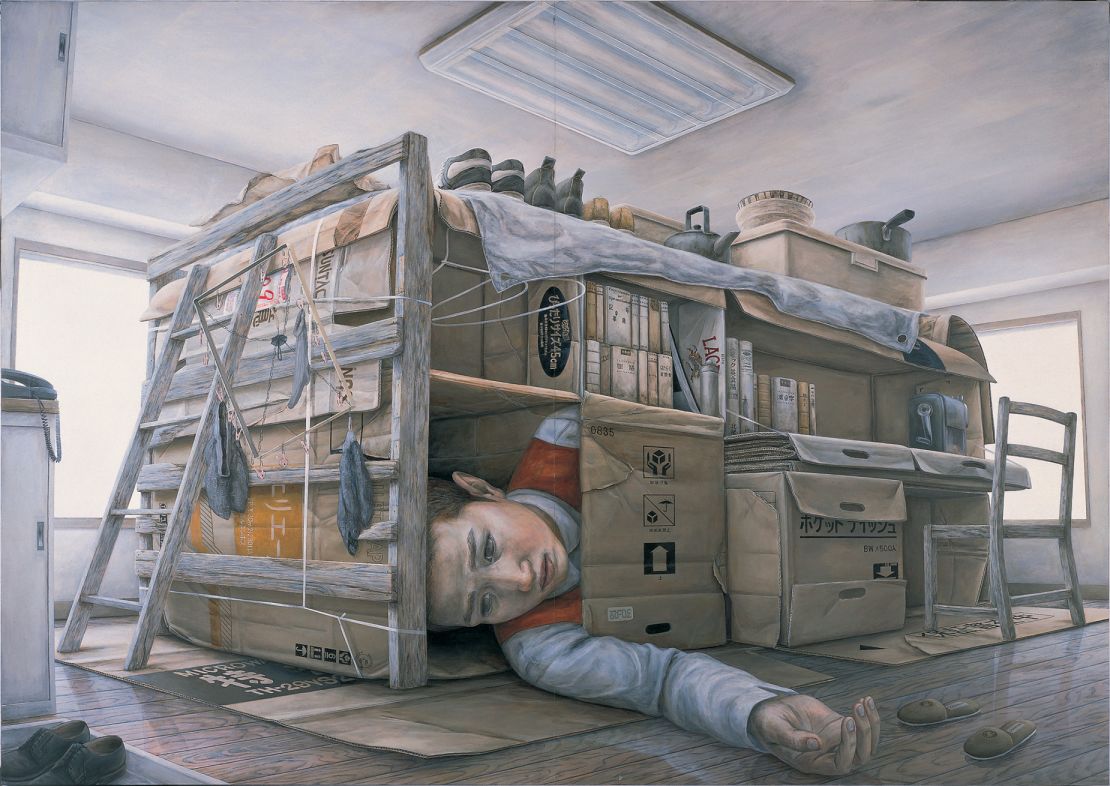
Ishida was relatively unknown, even in Japan, during his lifetime. But international interest in his work has grown since his death, with a number of institutions — including the San Francisco Asian Art Museum and the 56th Venice Biennale Italian Pavilion — showcasing his work.
Several of his paintings have also attracted large sums at auction, including “The Men on a Belt Conveyor,” which sold for over 8 million Hong Kong dollars ($1 million) at Sotheby’s last year, and an eerie untitled work of two giant men in neckties trapped by building scaffolding that fetched 6.25 million Hong Kong dollars ($800,000) at Christie’s in 2021.
“I could almost say he is one of the few — if not the only — artists among his generation who created such psychologically powerful works in this style,” Jacky Ho, a senior vice president in the 20th and 21st century art department at Christie’s Asia Pacific, told CNN via email.
“The metropolitan Japan depicted in Ishida’s works 20 years ago was so advanced and ahead of its time that it is still relevant today if we look at all the newly developed cities in our world,” he added. “His keen observations towards the society he was in at the time, were timely and still timeless.”
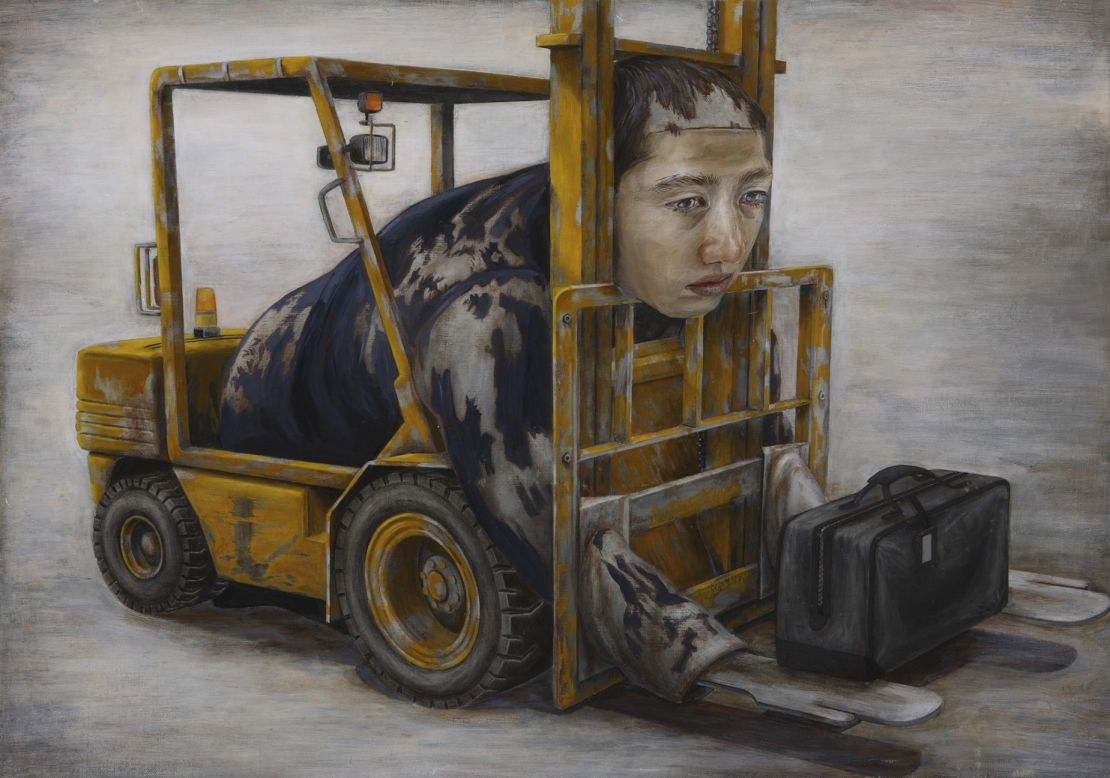
March towards dehumanization
In the 1990s, Japan’s rapid growth came to an abrupt stop after an economic bubble — built on market speculation and inflated property prices over the preceding decade — suddenly burst, sending the country into a long period of stagnation.
Once promised life-long employment in big corporations or unionized blue-collar jobs, young people found themselves unemployed, in temporary or low-paying positions or working exhausting 70-plus-hour weeks. “Karoshi,” a term for death by overwork, became a too-oft-heard refrain. (Even before the economic collapse, in 1990, Japanese people worked an average of 2,000 hours a year, more than 500 hours longer than their French or German counterparts, according to one academic study on the phenomenon.) Ishida, who had gone to art school, worked part-time at a print shop and as a night security guard.
Many of the 200 or so paintings Ishida completed in his lifetime portray the gloom of becoming a cog in the economic machine.
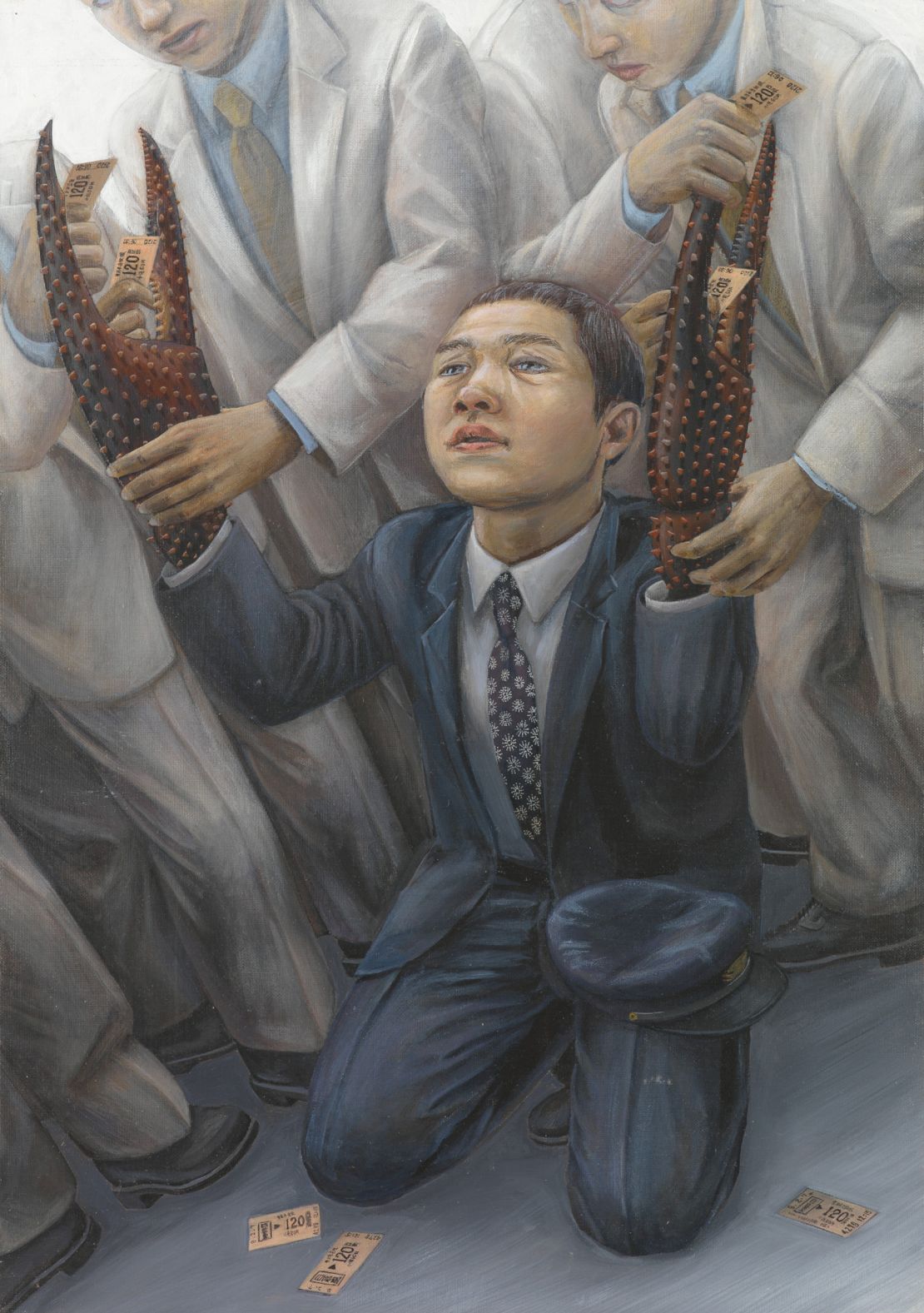
Ishida’s “sararimen” (salarymen) are “repeatedly portrayed in assembly lines as though they are the products they are making, never smiling, all with the same lost gaze, on the verge of automation,” wrote curator Cecilia Alemani in a foreword to the Gagosian’s exhibition catalog.
His early paintings, she added, show the “alienating and isolating effects of Japan’s regulated society, torn between overwork and the numbness of daily life, collectivity and isolation. They depict both the psychological wounds experienced by many and the artist’s own struggles with anxiety, emptiness and a precarious livelihood.”
Ishida died after being hit by a train in a Tokyo suburb in 2005, but it remains unclear whether his death was an accident or suicide.
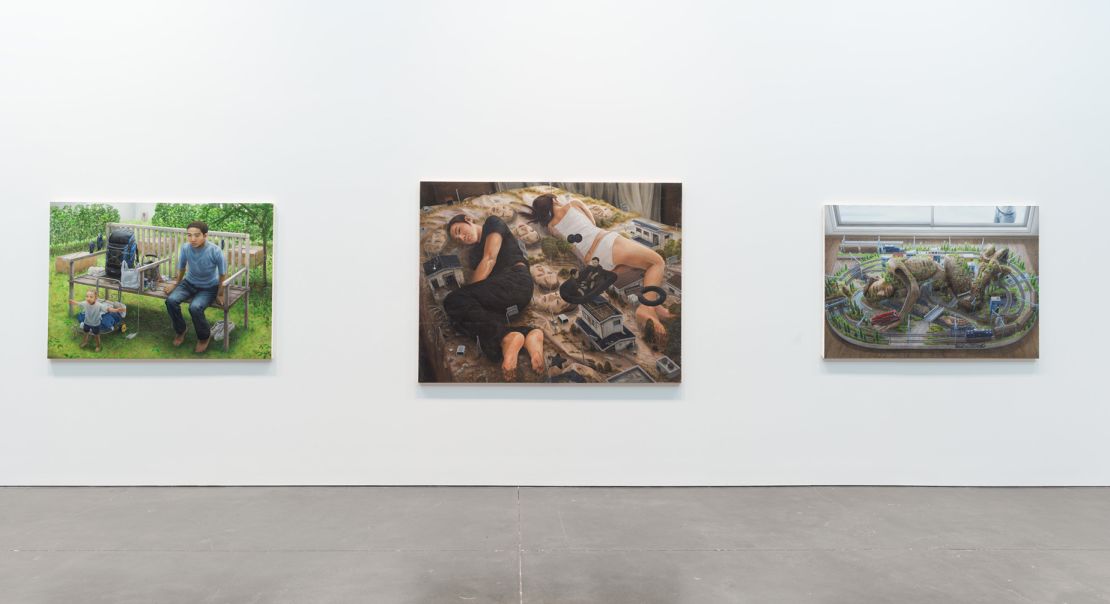
Viewing the world through screens
Japan’s “lost decade” was also characterized by growing focus on the social impact of the country’s economic woes. In his landmark 1998 book “Social Withdrawal – Adolescence Without End,” psychiatrist Tamaki Saito coined the now commonly-used phrase “hikikomori” to describe the phenomenon of young reclusive (mostly) men who didn’t leave their bedrooms and remained dependent on their parents.
“In many of Ishida’s compositions, socially withdrawn young men are depicted in interior spaces, frequently accompanied by nascent technologies such as computers and cell phones — which, with access to the World Wide Web, provided a way to maintain a view onto the outside world while remaining shielded by anonymity,” wrote Alemani.
At the time, Japanese tech firms like Sony and Sharp were helping to popularize personal computers, while cell phones and new game consoles flooded the market; industrial robots mechanized many manufacturing processes, replacing assembly-line workers — all motifs that come up again and again in the painter’s work.
In the 1998 painting “Wake,” students with characteristically vacant expressions are portrayed as part human, part large microscope. “Recalled,” which was painted the same year, shows the body of a young man at a funeral home, but instead of a coffin the man has been packed away in pieces into packaging to be returned to his maker.
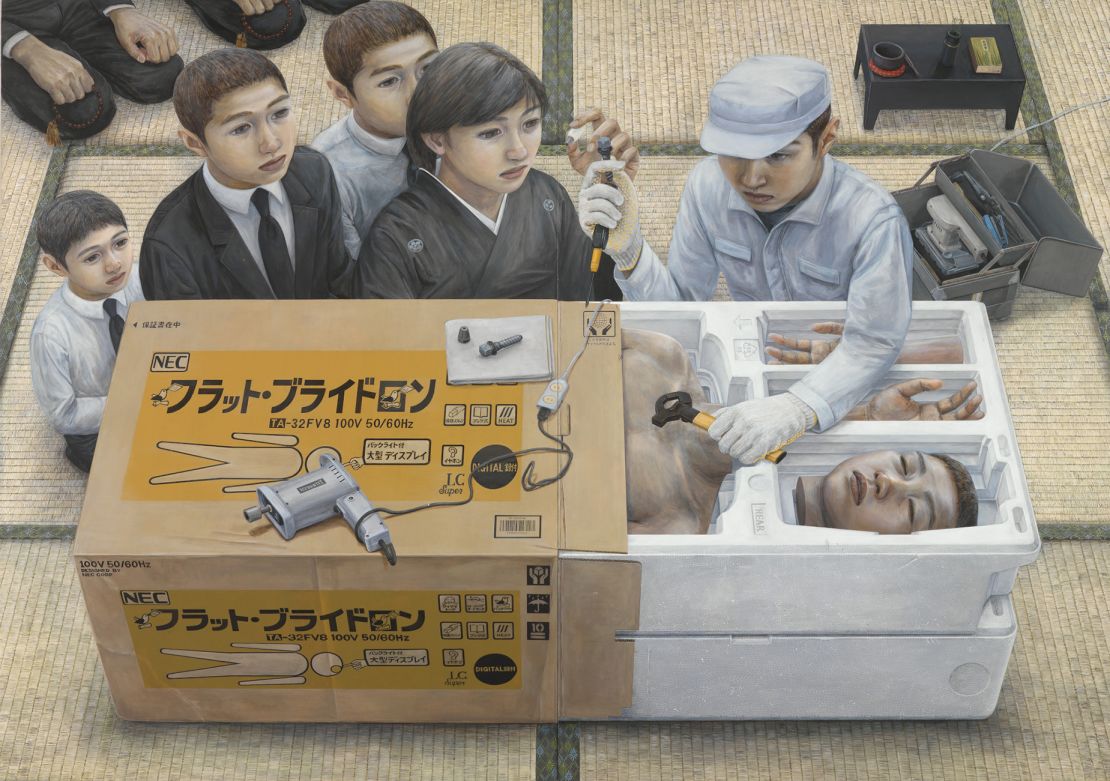
Ishida’s realistic but fantastical depictions of human vulnerability, estrangement and claustrophobia were a departure from themes tackled by artists like Takashi Murakami, Yayoi Kusama and Yoshimoto Nara. While many of his contemporaries were, “seduced by kawaiimono (cute things), as well as by manga and anime,” Alemani argued, Ishida instead described “with systematic attention the everyday life around him and the existential condition of many of his peers.”
In a notebook entry from 2000, Ishida wrote: “I believe that my self-portrait paintings have the function of letting the viewer look around at the contemporary world, society, and values.”
That world is not too different to ours, argues Alemani, who concluded her exhibition note writing: “Ishida’s art calls for a greater emphasis on community and human connection, and for a revaluation of our values and priorities as a society … His restless dream that art could highlight the social contradictions of our time resonates today more than ever.”
